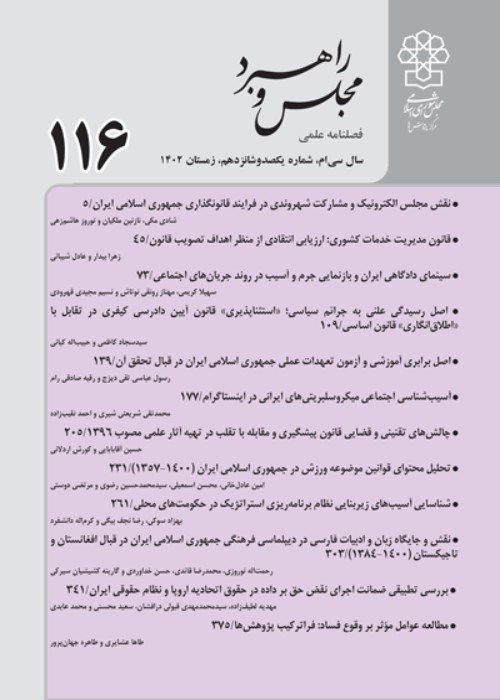The Decision-Making Frameworks Female Political Elites Must Abide by in Order to Become a Minster in Parliament
Decision-making has always been of interest to scholars because decision-making mirrors the skills and capabilities of a manager, hence the purpose of the present study is to examine the decision-making frameworks female political elites are forced to adhere to in order to enter their field of work. This research was conducted throughout ten parliamentary sessions. The statistical sample of this study was 20 women from ten seats in the Islamic Consultative Assembly. The methodology was based on the quantitative and qualitative content analysis techniques and the semi-structured interview techniques when collecting data. The data analysis was carried out in Excel in the form of different models and graphs and used the Visio software. The findings indicate that the decision-making framework for women delegates is largely based on the party's proposal, which is rationally and culturally based on a planned, advisory, at-risk sub-framework. Most elites do not have a specific pre-representation framework. The most important encouraging framework for women is the influence of their spouses.The motivational framework for women and their goal is mainly to carry out their duties within the confines of law and dealing well with allies and enemies. The role of the family (father, brother and husband) is the most important institutional framework, which largely influences women entering the political arena. Psychological factors are the most important causal framework for decision making. In general, the most important factors influencing the decision-making framework of female political elites is the representation of the power of men through the media, foreshadowing structural and cultural factors, preferences and interests, and personal and psychological experiences. This study identifies 8 main categories, 42 first subcategories, 83 second subcategories, and 439 semantic expressions, which are analyzed thematically.
- حق عضویت دریافتی صرف حمایت از نشریات عضو و نگهداری، تکمیل و توسعه مگیران میشود.
- پرداخت حق اشتراک و دانلود مقالات اجازه بازنشر آن در سایر رسانههای چاپی و دیجیتال را به کاربر نمیدهد.



